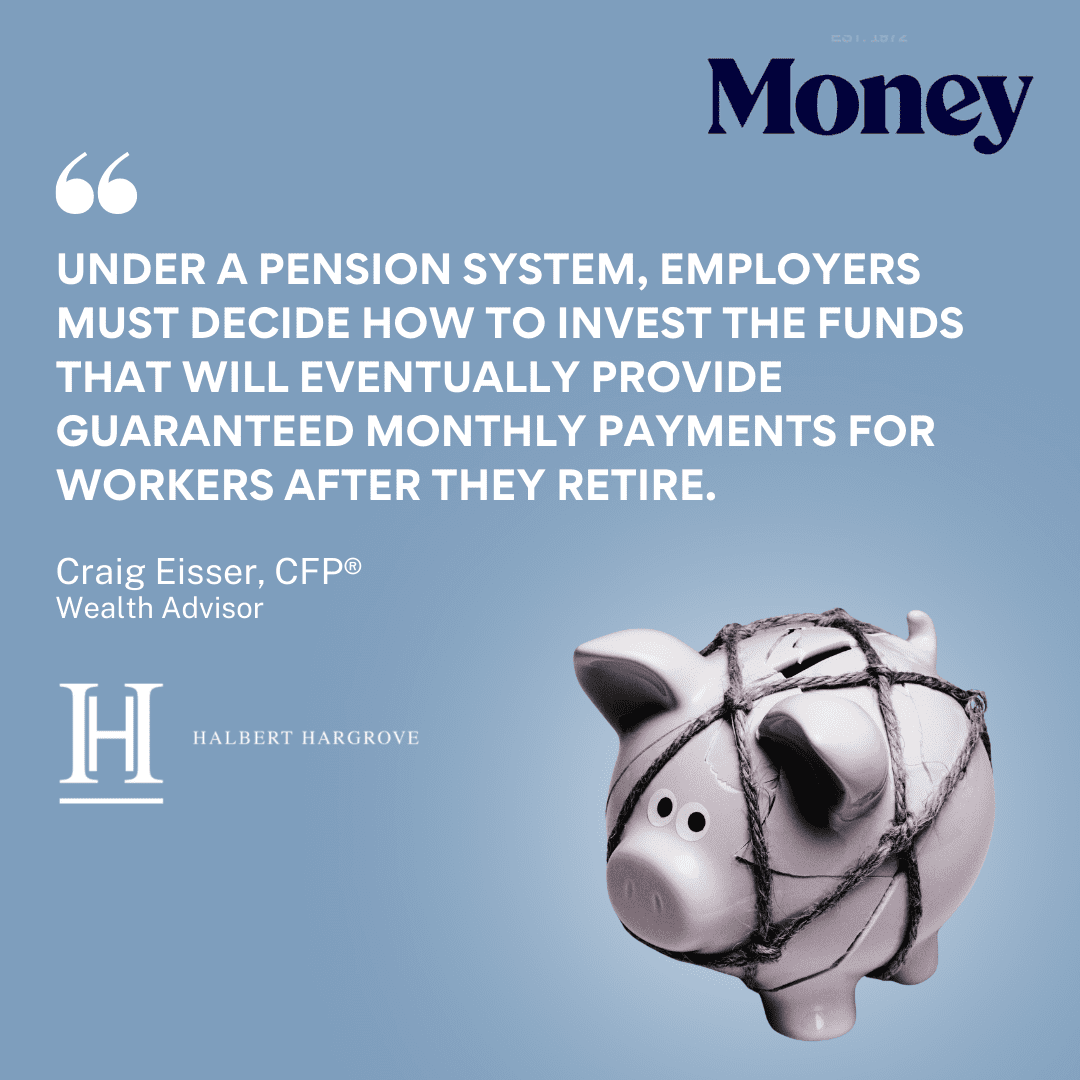By Mary Ellen Cagnassola from Money.com featuring Craig Eissler, CFP®, CIMA®, AIF®, PPC®, Wealth Advisor at Halbert Hargrove
As millions of Americans struggle to put away enough money for retirement, economists, lawmakers and workers alike are advocating for the revival of a retirement-planning relic.
A movement for a return to defined benefit plans, aka pensions, is garnering support amid anxiety over the country’s looming retirement crisis. Though these benefits have largely disappeared from the private sector over the last four decades in favor of defined contribution plans like 401(k)s, recent survey data shows the advantages of pensions are one thing Americans seem to agree on.
In a poll results released in February by the National Institute on Retirement Security, or NIRS, more than 80% of respondents said all workers should have a pension to protect their financial independence and self-reliance in retirement. More than three-quarters were also in agreement that employers’ move away from pension benefits has made the quote-unquote “American dream” more elusive.
It’s not hard to understand why U.S. workers feel this way, considering over half of all Americans are facing a financially insecure retirement, according to a report from the Senate’s Health, Education, Labor and Pensions Committee.
In a surprising move, the tech company IBM — which has about 288,000 employees — announced in November that it would end its 401(k)-matching program and return to a pension-like plan. The switch has some feeling optimistic that a so-called pension renaissance may be on the horizon, but can it really make a comeback?
Where did all the pensions go?
Pensions are an employer retirement benefit that provide monthly income in retirement, kind of like a paycheck. They’re also one leg of the traditional “three-legged stool” model of retirement income planning (the other two being Social Security and personal savings).
Dan Doonan, executive director of NIRS, says pension benefits are “incredibly user-friendly.”
“You sign up for a job, you do your job and you get the income later,” he says.
While workers bear the investment risk with defined-contribution benefits like 401(k)s, the opposite is true with pensions. Craig Eissler, a wealth advisor for Halbert Hargrove, says that under a pension system, employers must decide how to invest the funds that will eventually provide guaranteed monthly payments for workers after they retire.
These once-common benefits started becoming costly for employers as U.S. life expectancy increased over the 1980s and 1990s. Decreased interest rates and diminishing investment returns additionally created sizable underfunding and required employers to contribute more, Eissler says.
While pensions are still common in the public sector, most private companies now regard pension benefits as risky and expensive. Over the last four decades, most have shifted to defined contribution plans.
Almost 30% of the workforce had pension benefits in 1975, according to the HELP report. Today, that’s just 13.5%.


